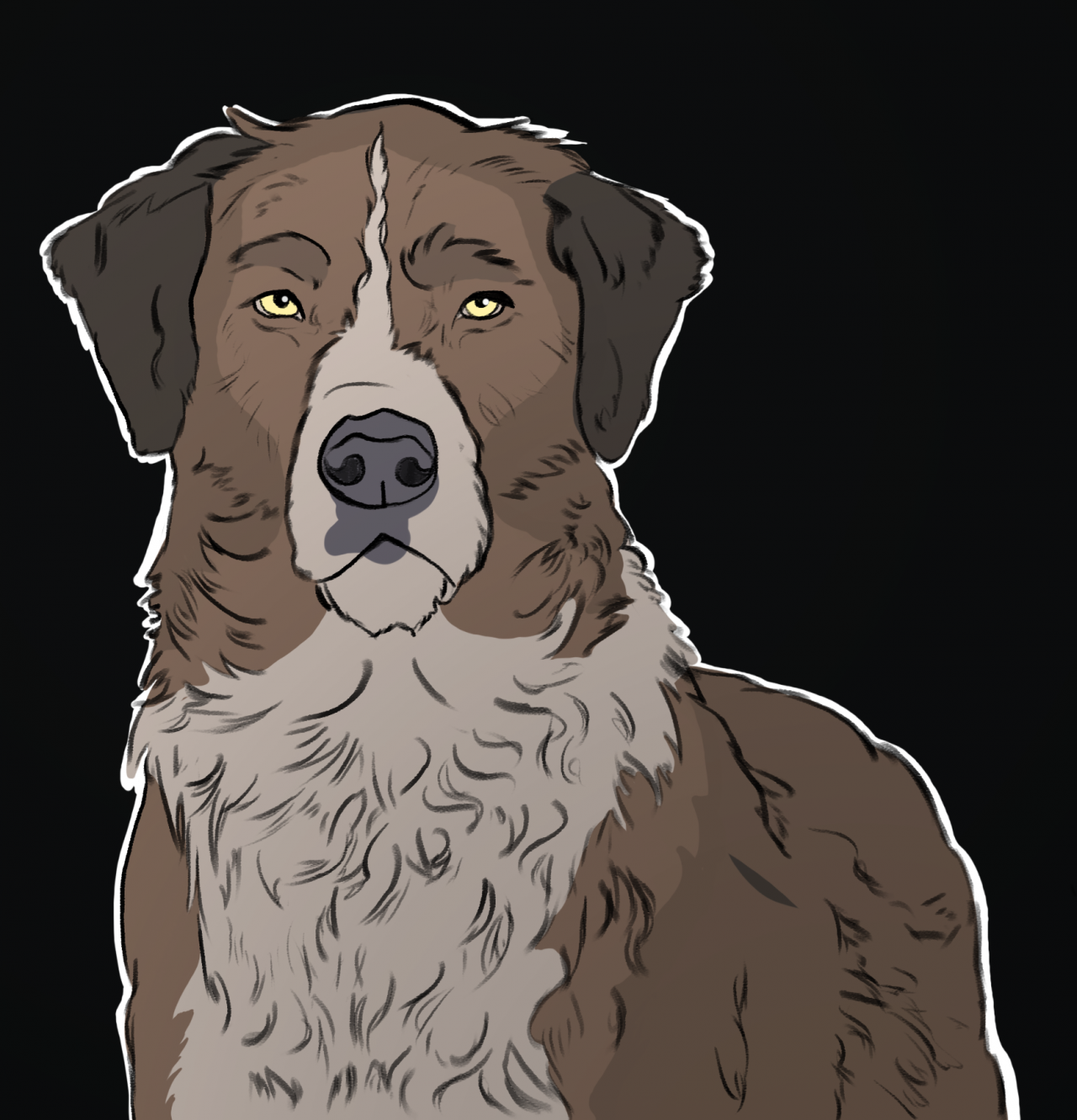Illustration by Andrea Nebhut
When I sat down to watch “The Call of the Wild,” I had almost no idea what the movie was about. I knew only three things it had: a dog, Harrison Ford and a lot of CGI. And in a case like this one, the combination of the three seemed to pay off.
Having no idea what the movie was about allowed me to not have any expectations to be let down or met. This meant I could simply enjoy the movie for what it was: a wholesome adventure tale. Of course, the movie is not without its share of flaws, indicating that it may be better to just wait for a Netflix release for this one.
“The Call of the Wild” appears to be a run-of-the-mill dog movie. Only this time, man’s best friend has a more unique world to inhabit. Taking place in a gold rush throughout the Alaskan Yukon, Buck (the CGI dog), goes from a spoiled house dog to an abused captive. From there, he is a sled dog for a mailman, then again an abused dog, then a freelance partner to Harrison Ford’s character. Yes, the movie makes time for all of these settings and contrary to how complex that shifting plot may seem, the film pulls it off quite well. Eventually, I came to realize that this film is not about Harrison Ford’s paired adventure with a dog (that storyline does not even begin until at least halfway through the movie), but the adventures of Buck throughout this cold, greed-filled world of man.
Ultimately, “The Call of the Wild” is a tale of a dog’s search for a true home, leaving the domesticated lifestyle, witnessing the firsthand cruelty of mankind, and then embracing the wilderness and answering well … “The Call of the Wild.” It is the equivalent of “man’s search for meaning” and indeed runs parallel to the various journeys of the human characters within the film. When Harrison Ford’s character, John Thornton, finally comes into the spotlight for the latter half of the movie, he, too, is searching for purpose and meaning. Buck and John highlight the wholesome bond between man and animal that these kinds of movies target.
Of course, it’s no secret that when John gives Buck a hug after some daring adventure sequence, Ford is hugging nothing more than special effects tool, as Buck is really a giant dog-shaped blob of CGI. And the CGI is noticeable from the first moment Buck runs on the screen. In fact, every animal on-screen is computer-generated, and there are a LOT of those CGI animals throughout the hour and a half run time. It’s good animation nonetheless, but it’s obviousness of it makes the whole experience a little less real.
The major set-pieces also suffer from the same over-reliance on CGI. While the wide shots of just the environments are breathtaking, as soon as an actor/actress is placed in front of them the facade becomes quite obvious and the moment is nearly ruined. After seeing all the CGI dogs run amok under the fake winter night sky, I found myself almost wishing that the humans and live set-pieces were just animated as well.
Furthermore, the whole film has kind of a cheesy vibe to it. It struggles to identify whether it wants to be a children’s movie or one that is taken more seriously. I’m not saying that it cannot be both, but the film did not quite find a balance between the two. The acting by Ford was solid, but everyone else and everything they said just felt forced 90 percent of the time. The kind of dialogue you would expect from a children’s movie but with the delivery and plot line of a more modern-day blockbuster.
However, I think that the overall cheesiness adds to its charm. I see this film as one that is watched and loved by the children of this generation only for them to rewatch it years later and go, “Yeah I never noticed how bad that CGI was,” similar to how we now look at some of our (or at least my own) childhood favorites like “Sharkboy and Lavagirl” or “Spy Kids.” And that is where I applaud this movie. It focuses more on the experience and enjoyment of its audience rather than the drama and social commentaries that critics love. It’s a wholesome tale that makes you feel good when you leave it. And that charm is what makes it hard to truly critique. However, it is my humble opinion that for a moviegoer with a budget, it’s best to save this charm for a much cheaper price when it inevitably begins streaming.







